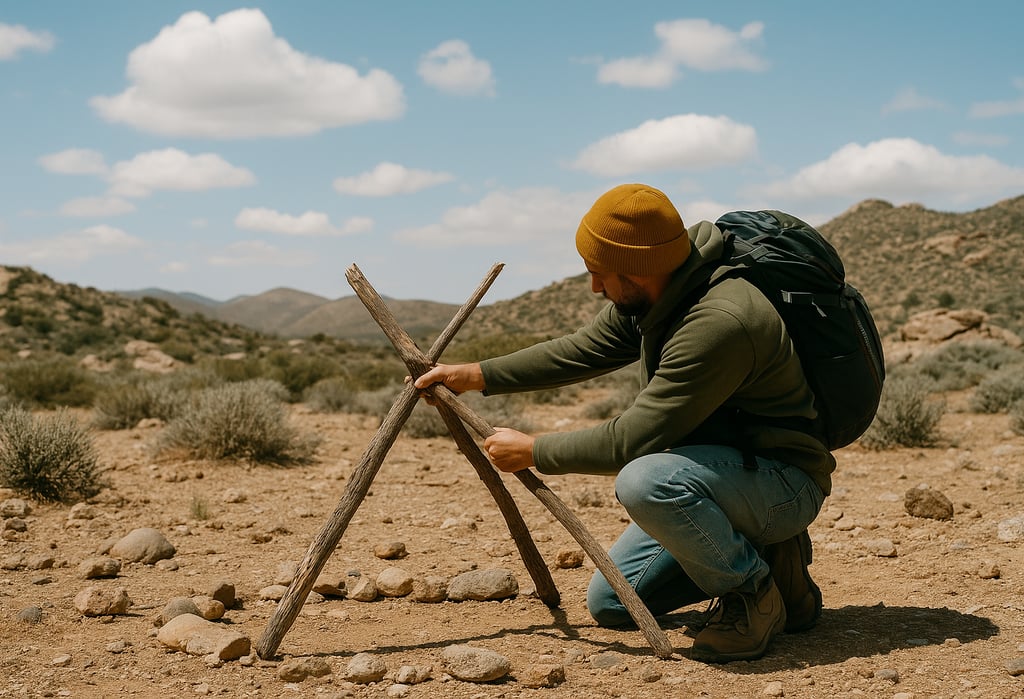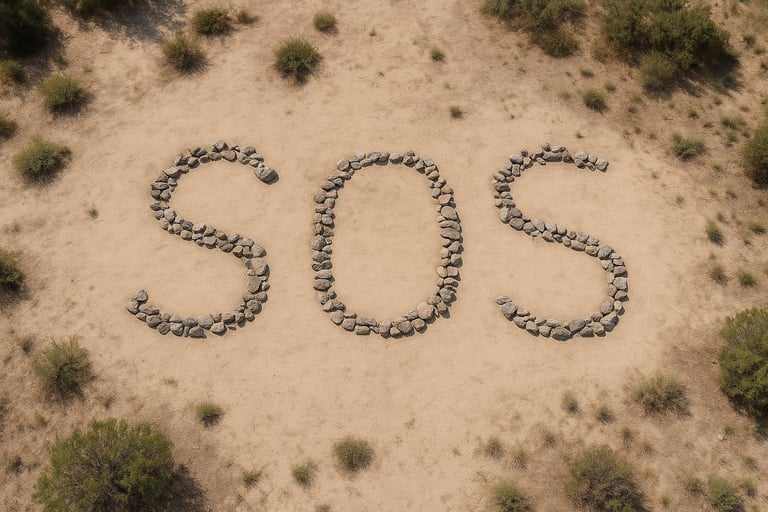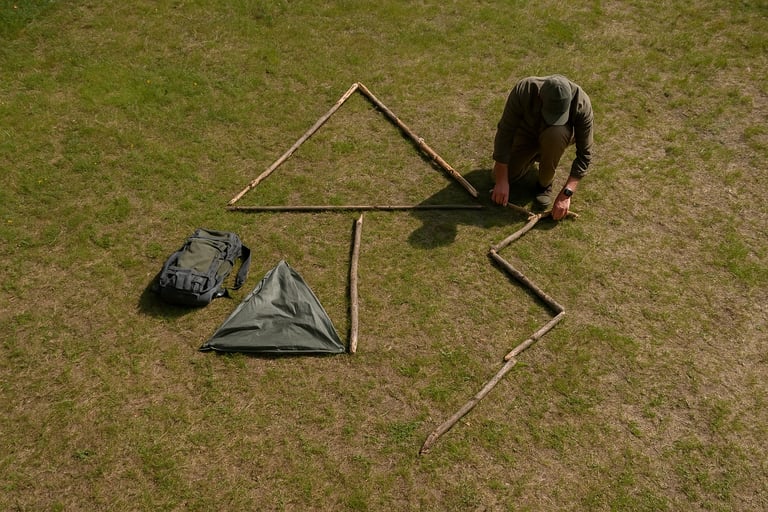Building Signal Structures: How to Use Visible Signs for Wilderness Rescue
Learn how to build signal structures in the wild to increase your chances of rescue. This guide covers the best survival signaling techniques using high-visibility materials, natural elements, and strategic placement to call for help in remote areas.


Building Signal Structures: How to Use Visible Signs for Wilderness Rescue
Why Visible Signals Matter in a Wilderness Emergency
In the wilderness, modern tools like phones or radios often fail. That’s why knowing how to visually signal for help using physical structures is such a critical wilderness survival skill. Whether you're lost, stranded, or injured, large signal structures that stand out against natural surroundings dramatically increase your visibility to rescuers, especially from the air. This is one of many effective strategies for using visual signals to call for rescue, which can dramatically improve your odds of being spotted in remote environments.
Even if you’re using other signaling tools like sound or light, combining them with visual signals boosts your chances. Think of it as creating a backup that keeps working even if you're asleep, injured, or your flashlight batteries die.
The Basics of Wilderness Rescue Signaling
The key to building effective rescue signals is contrast. You want your structure to look unnatural in the environment. It Needs to stand out as unusual. That might mean creating large shapes in open clearings, using reflective materials as signals, or arranging branches or rocks in clear, purposeful patterns.
One classic option is the international distress signal SOS spelled out using logs, rocks, or gear. You can also enhance your visibility by writing messages for Help in the snow, sand, or dirt using any natural or artificial material available.You can also create shapes like large X’s, arrows pointing to your location, or even simple geometric patterns that wouldn't occur naturally in a forest or desert.
Best Materials and Methods for Signal Structures
You don’t need fancy tools to build effective signals, just creativity and an eye for visibility. Use anything with strong contrast to the background. That could include:
Dry driftwood on wet sand, bright clothing or gear laid flat, reflective mylar blankets, or even snow packed into dark soil. Try to keep your materials symmetrical and neatly arranged. The more intentional your layout looks, the more likely it will be interpreted as a distress call rather than random debris.
If you’re in an open area, go big. Make your design at least 10–15 feet long on each side so it's visible to aerial search crews. In forested terrain, clear away brush to create an open shape and use logs, gear, or bright fabric to highlight the design.
Where to Place Your Signal for Maximum Visibility
Think elevation and contrast. Hillsides, clearings, sandbars, or frozen lakes make excellent backgrounds. Avoid dark forest floors or shadowed slopes unless that's your only option. If you can’t find an open area, try positioning bright gear or reflective items in a tree canopy where light hits it.
Also think about the angle of visibility — helicopters and drones tend to fly overhead, so try to orient your signals horizontally when possible. If you're near a known trail or search zone, placing your signal structure near likely travel paths helps, too.
Combining Signal Structures With Other Rescue Techniques
Signal structures work best when combined with other survival signaling techniques. For example, you can place your signal near your camp and use a flashlight at night to briefly illuminate it if you hear aircraft. And during the day, Pair those techniques it with sound, like blowing a whistle or banging metal.
Also remember to maintain your structure over time. Wind and weather can scatter your materials, so check and repair it regularly. If you move locations, be sure to build a new one and make an arrow or arrows in the direction you are moving off to. That way, if search and rescue gets to your first signal and you're no longer there, they'll at least have a general idea of which direction you moved to and they can continue their search.




© 2025. All rights reserved About | Privacy Policy | Terms and Conditions | Affiliate Disclosure | Disclaimer


